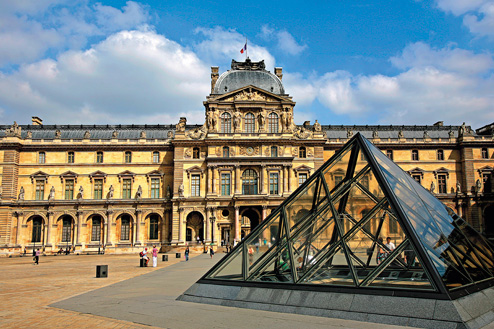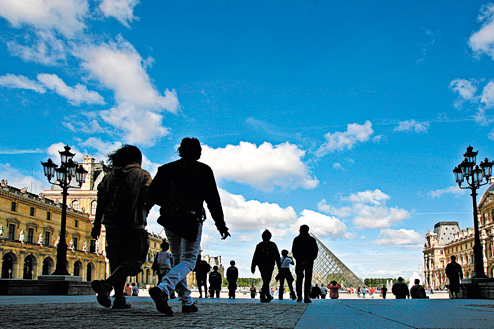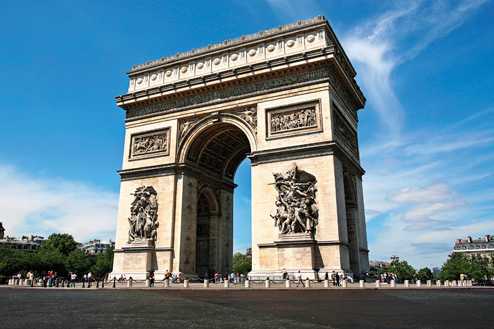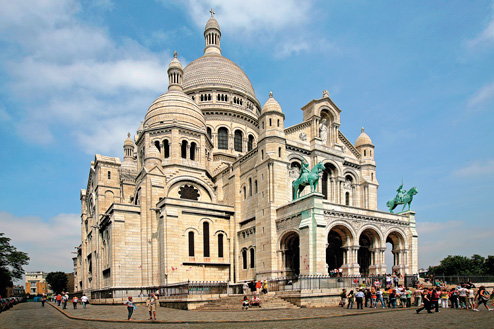Montparnasse
Montparnasse still trades somewhat on its artistic heyday, though the modern concrete buildings along avenue du Maine might make you wonder why. The 210m Tour Montparnasse doesn’t help matters either; it’s the building Parisians most love to hate. That said, the view from the 56th floor is one of the best in the city.
For the rest, this is an attractive, generally bourgeois area, well served with cafes, cinemas and theatres. The latter, including the delightful Comédie Italienne, are ranged along the rue de la Gaïté, where they’ve been joined by a seedier element. This street leads onto boulevard Edgar Quinet. On Sundays, a lively arts and crafts market is held here.
In the 1920s and ‘30s, Montparnasse was a cauldron of artistic activity, as writers, painters, sculptors and the avant-garde migrated here from the more expensive Montmartre. Hemingway and Cocteau drank at La Coupole on boulevard du Montparnasse. An international mix of artists alighted at La Ruche (see below), a community led by benevolent sculptor, Alfred Boucher.
Spruce Montparnasse Cemetery harbours a famously free-thinking crowd, from veteran resident Baudelaire to Sartre, Simone de Beauvoir, Samuel Beckett and Serge Gainsbourg. The sculptor Zadkine is here, too, and the Musée Zadkine, along with the Musée Bourdelle (01 49 54 73 73) close by, provide insights into the artistic milieu. But it’s not all nostalgia; innovative exhibitions held at the stunning Fondation Cartier on boulevard Raspail have put a spring in the step of contemporary art lovers across the city.
If you continue east, you’ll see the Observatoire, a world first, built for Louis XIV; it is, alas, largely off-limits to visitors. Occupying the southern corner of place Denfert-Rochereau is the entrance to Les Catacombes, one of the city’s more macabre landmarks. A visit through its rambling tunnels of stacked skulls is not for the squeamish, but with all those memento moris, you won’t forget it in a hurry.
Back across avenue du Maine, place de Catalogne was designed by Riccardo Bofill in the 1980s (though you wouldn’t have guessed it from the imposing classical overtones), and it’s agreeable to wander around. If it’s open, you should also take a peek at the church of Notre-Dame du Travail, built for the army of construction workers brought in for the Eiffel Tower and the Exposition Universelle. Carry on along rue Vercingétorix if you want to pick up the cycling or walking path leading, eventually, out to leafy suburbs such as Sceaux.
The area immediately west of here lacks much in the way of visitor appeal. One exception, though, is the Parc Georges-Brassens, a modern park which has taken the place of the old Vaugirard abattoir. At weekends, bibliophiles should head for the book fair, held in the old Halle aux Chevaux. Not far away, on passage de Dantzig, you can still see La Ruche, where Boucher rented out studios for absurdly low rents to Modigliani, Chagall and Léger among others. Designed by Gustave Eiffel, the beehive-shaped building was originally a wine pavilion, and it’s a genuinely lovely anachronism. If you’re in luck, one of the resident artists may let you in to soak up the atmosphere, otherwise, you’ll have to settle for a glimpse through the gate.
For the rest, this is an attractive, generally bourgeois area, well served with cafes, cinemas and theatres. The latter, including the delightful Comédie Italienne, are ranged along the rue de la Gaïté, where they’ve been joined by a seedier element. This street leads onto boulevard Edgar Quinet. On Sundays, a lively arts and crafts market is held here.
In the 1920s and ‘30s, Montparnasse was a cauldron of artistic activity, as writers, painters, sculptors and the avant-garde migrated here from the more expensive Montmartre. Hemingway and Cocteau drank at La Coupole on boulevard du Montparnasse. An international mix of artists alighted at La Ruche (see below), a community led by benevolent sculptor, Alfred Boucher.
Spruce Montparnasse Cemetery harbours a famously free-thinking crowd, from veteran resident Baudelaire to Sartre, Simone de Beauvoir, Samuel Beckett and Serge Gainsbourg. The sculptor Zadkine is here, too, and the Musée Zadkine, along with the Musée Bourdelle (01 49 54 73 73) close by, provide insights into the artistic milieu. But it’s not all nostalgia; innovative exhibitions held at the stunning Fondation Cartier on boulevard Raspail have put a spring in the step of contemporary art lovers across the city.
If you continue east, you’ll see the Observatoire, a world first, built for Louis XIV; it is, alas, largely off-limits to visitors. Occupying the southern corner of place Denfert-Rochereau is the entrance to Les Catacombes, one of the city’s more macabre landmarks. A visit through its rambling tunnels of stacked skulls is not for the squeamish, but with all those memento moris, you won’t forget it in a hurry.
Back across avenue du Maine, place de Catalogne was designed by Riccardo Bofill in the 1980s (though you wouldn’t have guessed it from the imposing classical overtones), and it’s agreeable to wander around. If it’s open, you should also take a peek at the church of Notre-Dame du Travail, built for the army of construction workers brought in for the Eiffel Tower and the Exposition Universelle. Carry on along rue Vercingétorix if you want to pick up the cycling or walking path leading, eventually, out to leafy suburbs such as Sceaux.
The area immediately west of here lacks much in the way of visitor appeal. One exception, though, is the Parc Georges-Brassens, a modern park which has taken the place of the old Vaugirard abattoir. At weekends, bibliophiles should head for the book fair, held in the old Halle aux Chevaux. Not far away, on passage de Dantzig, you can still see La Ruche, where Boucher rented out studios for absurdly low rents to Modigliani, Chagall and Léger among others. Designed by Gustave Eiffel, the beehive-shaped building was originally a wine pavilion, and it’s a genuinely lovely anachronism. If you’re in luck, one of the resident artists may let you in to soak up the atmosphere, otherwise, you’ll have to settle for a glimpse through the gate.













